Affiliate disclosure: This post may contain affiliate links. Please see our Privacy Policy.
Wild nuts aren’t just for the squirrels, they’re an abundant and nutrient-dense wild food that’s just waiting for the harvest. Keep an eye out for these delicious wild protein sources and pack them away for winter enjoyment.
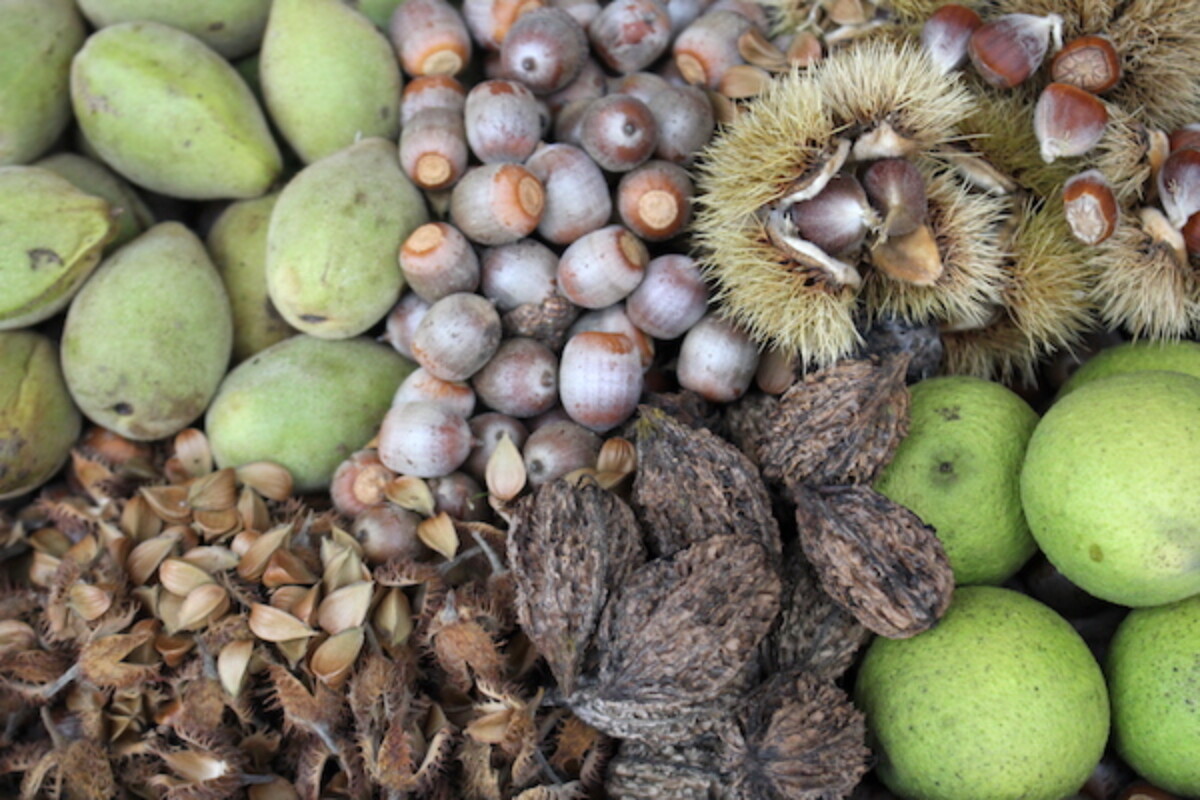
Fall is my favorite time to forage, not only because there’s so much out there, but also because everything is delicious and nutrient-dense.
It seems like most foragers eagerly await the first dandelions and bitter greens that come with spring foraging, and then the foraging excitement drops off until next year. They may stop to pick the wild fruits and berries that dot the landscape during the summer months, but autumn doesn’t seem to get much attention from any but the most committed foragers.
I think it’s a shame, because all those bitter greens of spring have nothing on the delicious, rich harvests of autumn. There is so much out there to forage in autumn!
Winter, understandably, is a good motivator, and I get it…everyone’s excited when the first life bursts forth after snow…but if you have a stockpile of wild nuts packed away to remind you of better days, that winter snow comes and goes in no time.
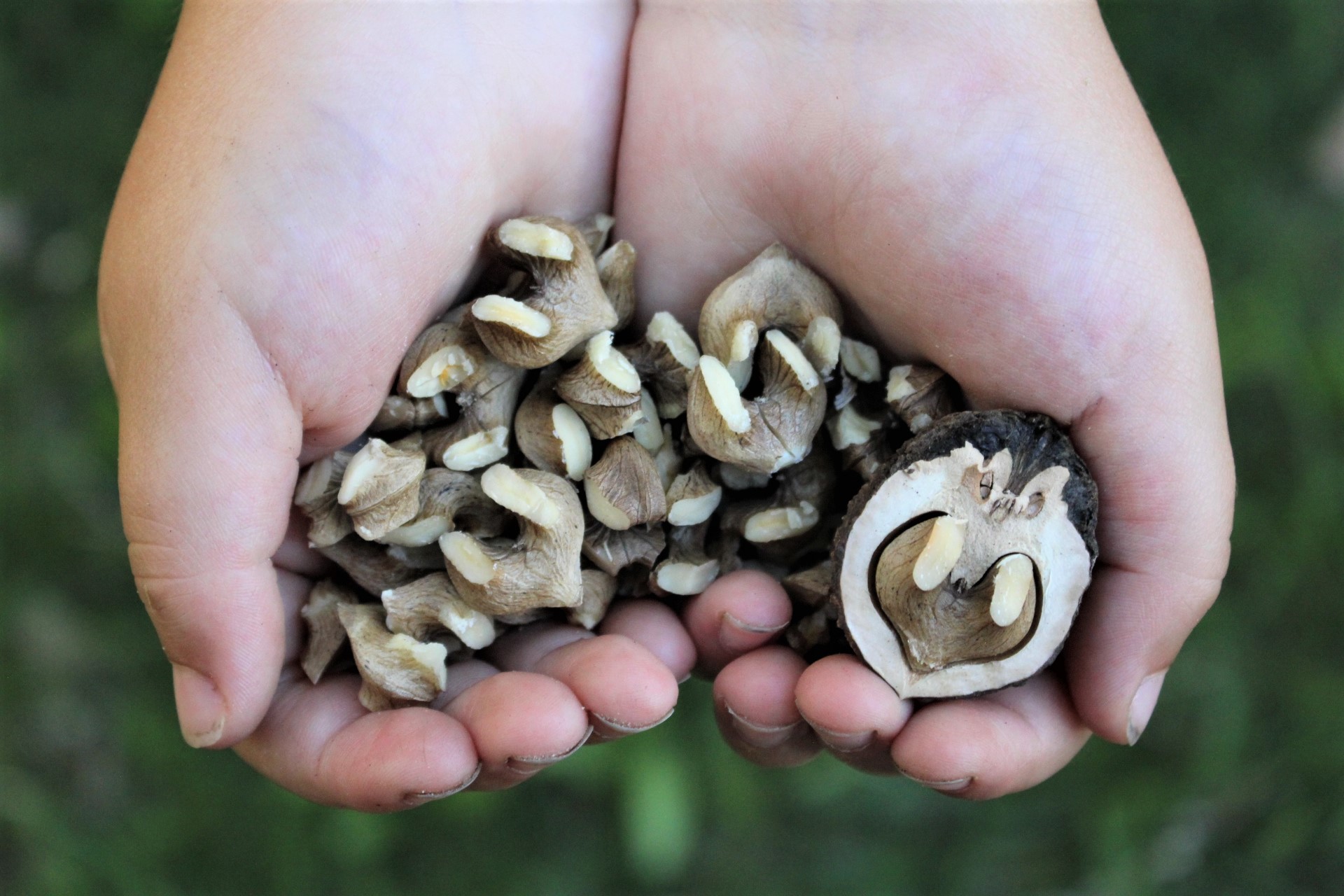
Best Places to Find Wild Nut Trees
While wild edible nuts are a spectacular find, they’re not likely to pop up spontaneously on your lawn like a dandelion. Most nut trees need to be somewhere between 10 and 80 years old before they start to bare.
It’s true, they’re planted every year by a devoted army of squirrels, but once you’re deep in the woods those same squirrels are also apt to beat you to the harvest. On old homesteads and older public spaces, you’ll find an abundance of nut trees from a time when people really knew the value of free calories growing on trees.
Old cemeteries, in particular, are great sources for wild nuts.
I know, you’re thinking it might be a bit strange to harvest food from a cemetery…but that’s actually what they’re there for!
Back in the day, cemeteries were a place of picnics and socialization. They weren’t the somber, silent places they are today, they were a celebration of life.
Families would pack a lunch, bring the kids and spend the day on a blanket hanging out with grandma (or at least, next to her tombstone). Especially in the autumn, where they’d remember the hard work of those that came before them, knowing many of those alive wouldn’t make it through the winter ahead.
Just like the harvest festivals and fairs, cemeteries were a were brought to life as families celebrated their loved ones in what today is known as “pumpkin spice season.” The kids would skip and play, and the adults would harvest nuts from the grounds.
Those very nuts were intentionally planted in ground that would not be disturbed for centuries because they knew that a good quality shagbark hickory won’t bare full crops in it’s planter’s lifetime. It’ll be 80 to 100 years before anyone gets to enjoy them.
For some of these cemeteries, at least the older ones in Europe and New England, it is now hundreds of years later…and the grounds are silent each autumn. No one comes to harvest the nuts they planted intentionally to serve future generations, and bring life back to the grounds each autumn.
Know that one of the very best places to forage wild nuts is old cemeteries, and don’t feel weird about it. Everyone buried there came from a time where harvesting from cemeteries was a way of honoring the dead, and just a part of life.
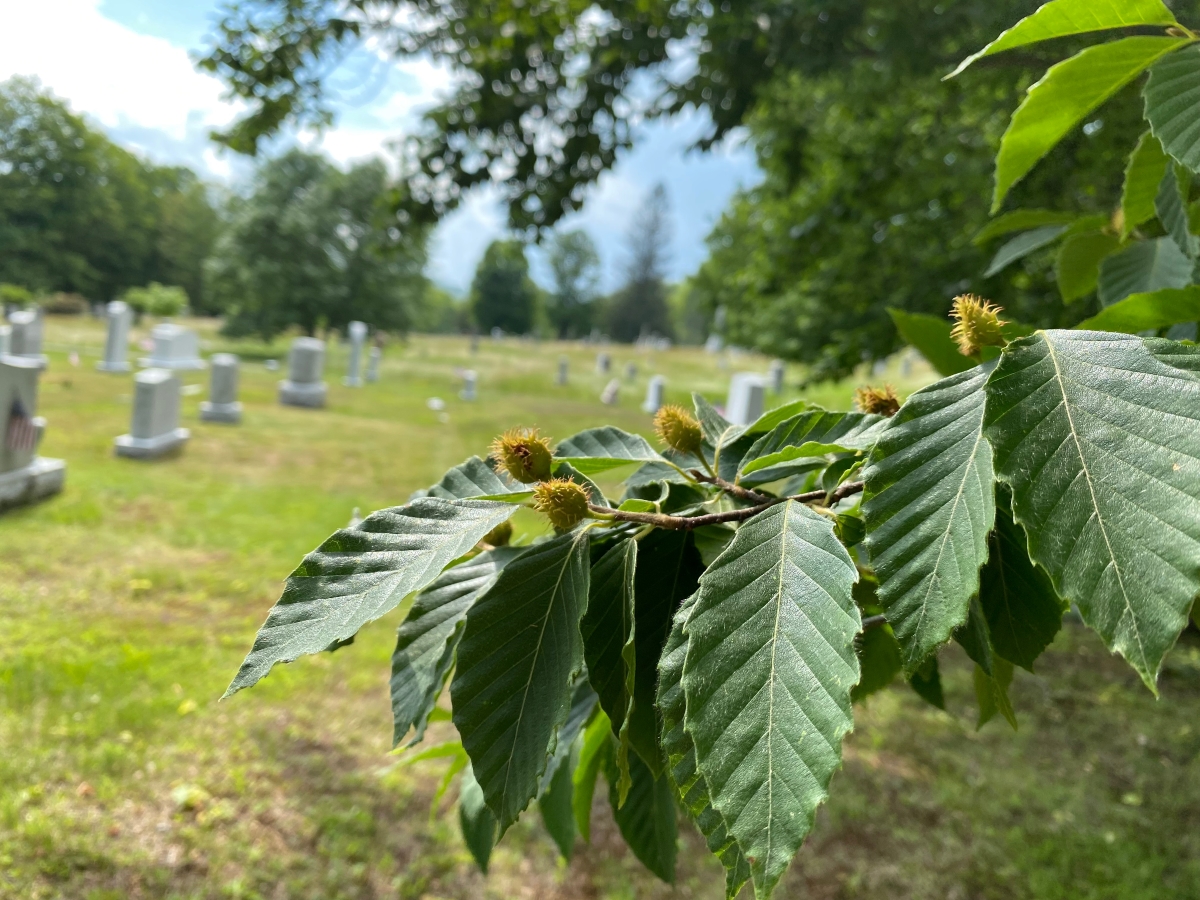
Types of Wild Nuts
The types of wild nuts available depends on your particular environment and growing zone, but these types are available across most of the United States. We live in Vermont (zone 4), which doesn’t get some of the sweeter pecans, but we do get all the other types, including closely related hickory nuts.
- Acorns
- Almonds
- Beechnuts
- Black Walnuts (& English Walnuts)
- Butternuts
- Chestnuts
- Hazelnuts
- Heartnuts
- Hickory nuts (and Pecans)
- Pine Nuts
I’ll go through each type of wild edible nut individually.
Acorns
Probably the most abundant of all wild nut species, acorns are available around the world. They’ve been used as a food source since the neolithic, where they were responsible for as much as 60 to 80% of the calorie intake in some parts of Europe and the middle east and some of the traditional acorn recipes still survive to this day.
Though animals like squirrels and wild pigs can eat them as is, they require processing before they can be consumed by humans. They’re generally leached and made into acorn flour for baking treats like acorn flour cookies or acorn flour pancakes.
They can also be shelled and boiled until they’re fully leached (several hours) and then consumed whole, or roasted after hot leaching, and eaten like salted nuts. In truth, boiled acorns are more like beans than nuts in my opinion, and they make a darn good acorn burger.
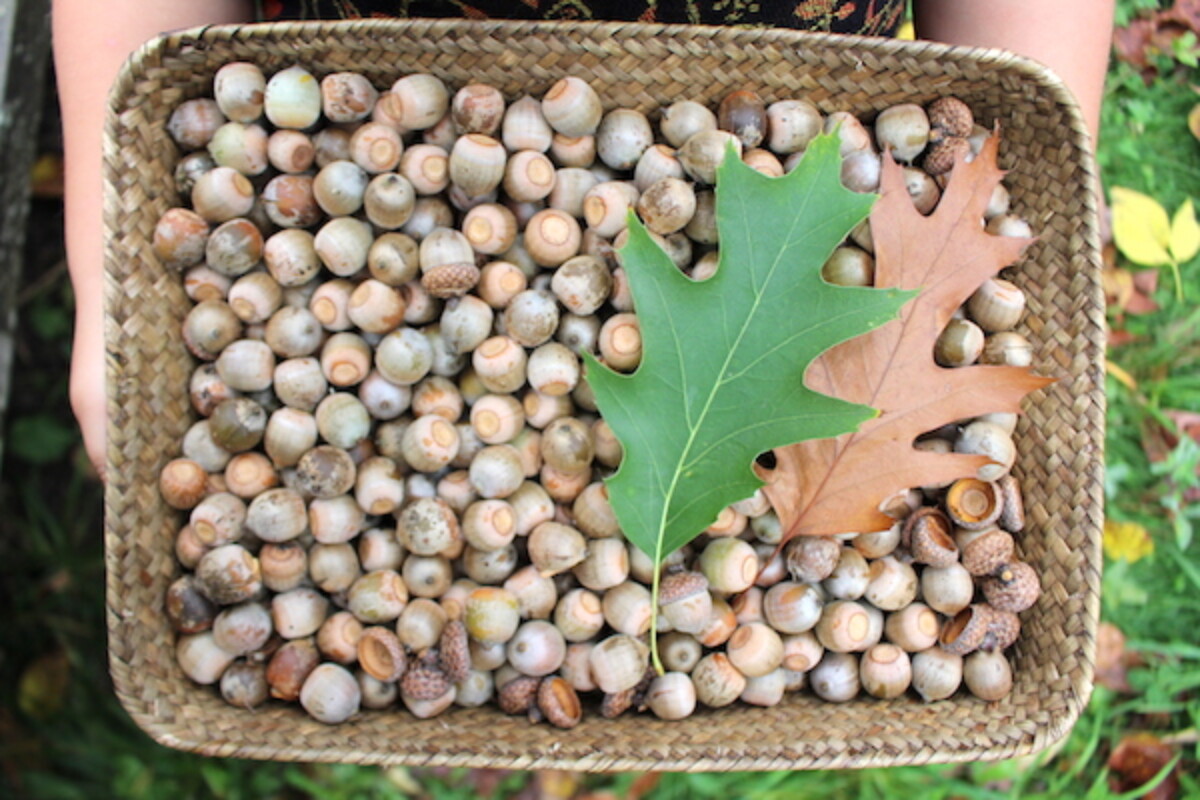
Almonds
Wild almonds are mostly found out west in the US, not too far from the cultivated almond fields. There are a few new varieties of zone 5 hardy almonds available, but they haven’t been around for long enough to allow wild seeded specimens to make it to the northeast (yet).
Still, if you are out west or in the south, they’re not a bad option.
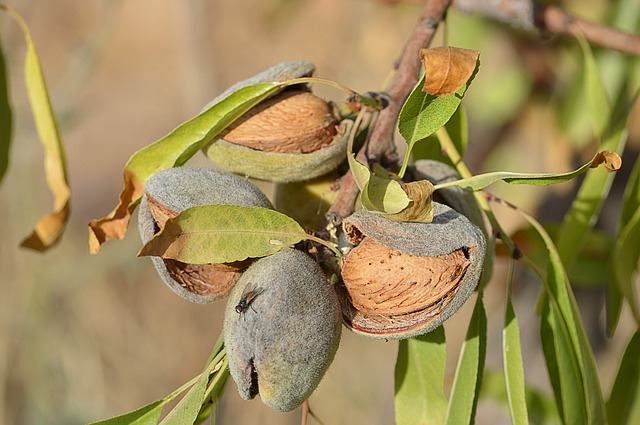
Beechnuts
This old fashioned nut is common in Europe where they’re both foraged, and grown commercially for beech nut oil (especially in France and England). In the US, wild beechnuts were an important food stuff the pioneers (and the indigenous population as well, before colonization).
In Farmer Boy, one of the Little House on the Prairie books, Almonzo goes off into the woods with a wagon to gather wild beechnuts, and then they’re processed through the same thresher that the family uses for oats, beans and grains:
“’What say we run some beechnuts through?’ Father asked. So they pitched beech leaves into the hopper, and now the whirring fans blew away the leaves, and the three-cornered brown nuts poured out. Almanzo filled a peck-measure with them, to eat that evening by the heater.“
These days, they’re incredibly abundant in the woodlands, and you can identify them by their unique tri-cornered nuts inside a velcro like husk.
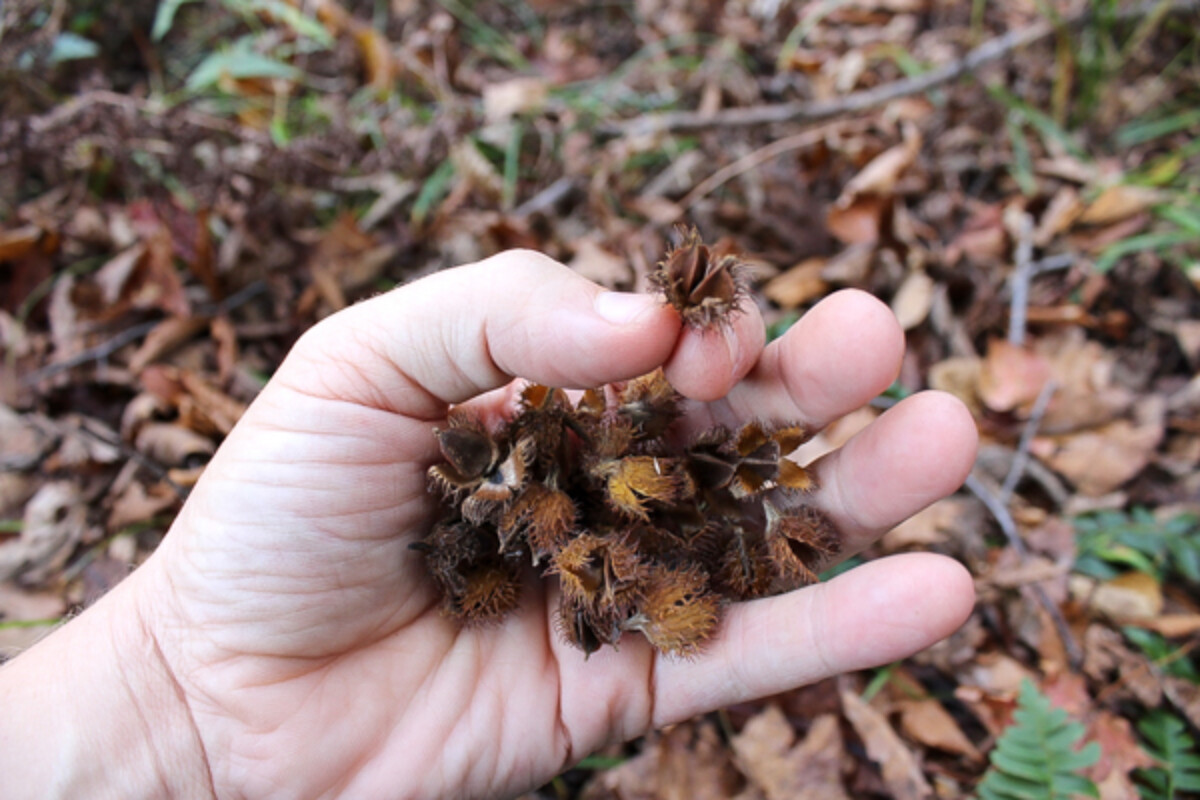
Black Walnuts
Perhaps the most abundant wild nut, at least in the northeast, wild black walnuts are readily available in the woods, along roadsides, in parks and just about anywhere a squirrel chose to hide a nut. They begin baring at around 10 to 15 years old, so they also colonize clear cuts readily if there’s a mature nut baring tree nearby.
They were popular yard trees all the way up to the 1970’s and many of the old timers around here talk about planting black walnut trees in their first home right after their marriage. Strong trees build strong marriages, so they say…and all those plantings led to even more wild trees.
The nuts themselves are inside a green outer husk and a hard shell that needs a good bit of force to crack. (Here’s my trick to cracking black walnuts.)
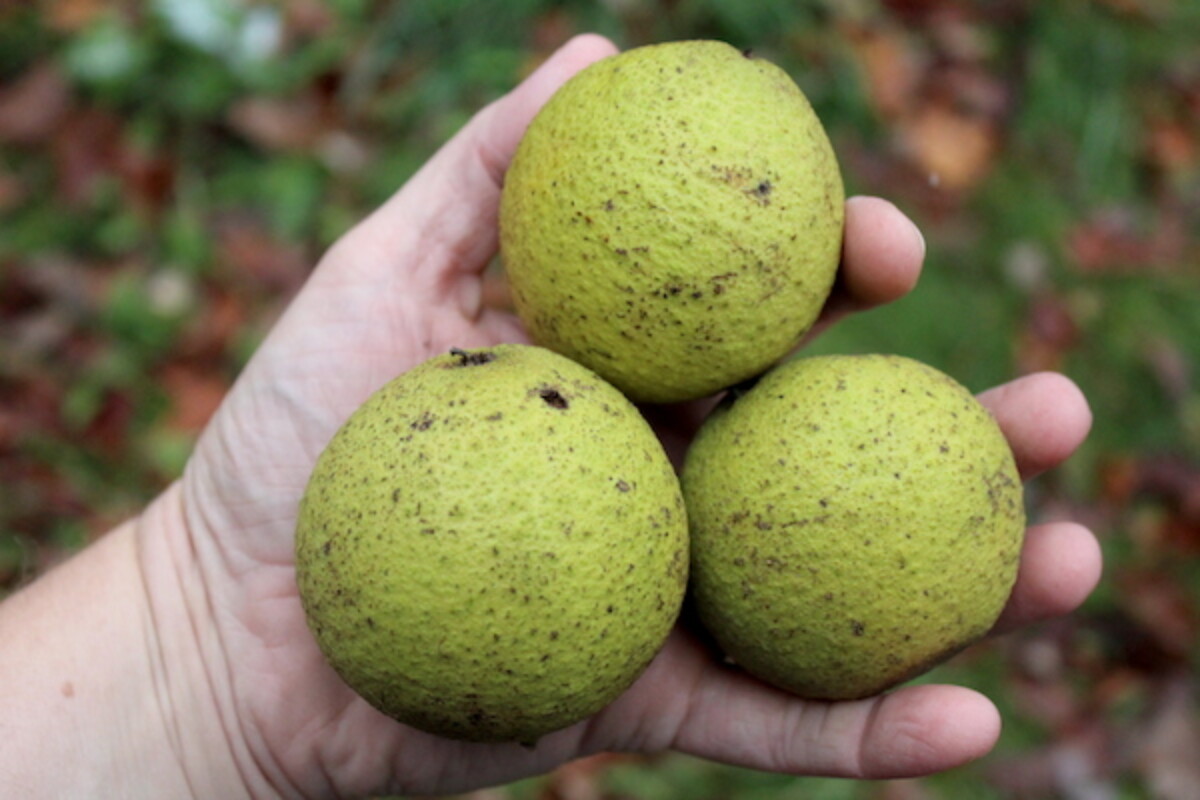
Butternuts
A bit less common than black walnuts, wild butternuts (Juglans cinerea) are also known as “white walnuts” or “sweet white walnuts” because of their mild, sweet nut flavor.
Like black walnuts, they have a green outer husk and a hard inner shell. The main visual difference is black walnuts are nearly round, while butternuts have more of an elongated shape.
They’re a real treasure, and one of the best edible wild nuts available.
Unfortunately, they’re being devastated by a butternut canker and they’re much less common than they once were. Still, the remaining wild trees are developing a resistance and the outlook is promising.

Chestnuts (& Chinquapins)
Wild chestnuts are also a lot less common than they once were, due to a chestnut blight, but the native wild trees are interbreeding with resistant Asian chestnut species and hybrids are doing quite well in the wild.
It’s still possible to find wild chestnuts, both native American chestnuts, Asian varieties and hybrids. All have a distinctive pin prickle outer husk surrounding groups of two or three nuts inside.
They’re usually roasted these days, but historically, they were made into chestnut flour and eaten as a wheat flour substitute by poor peasants (especially in Europe).
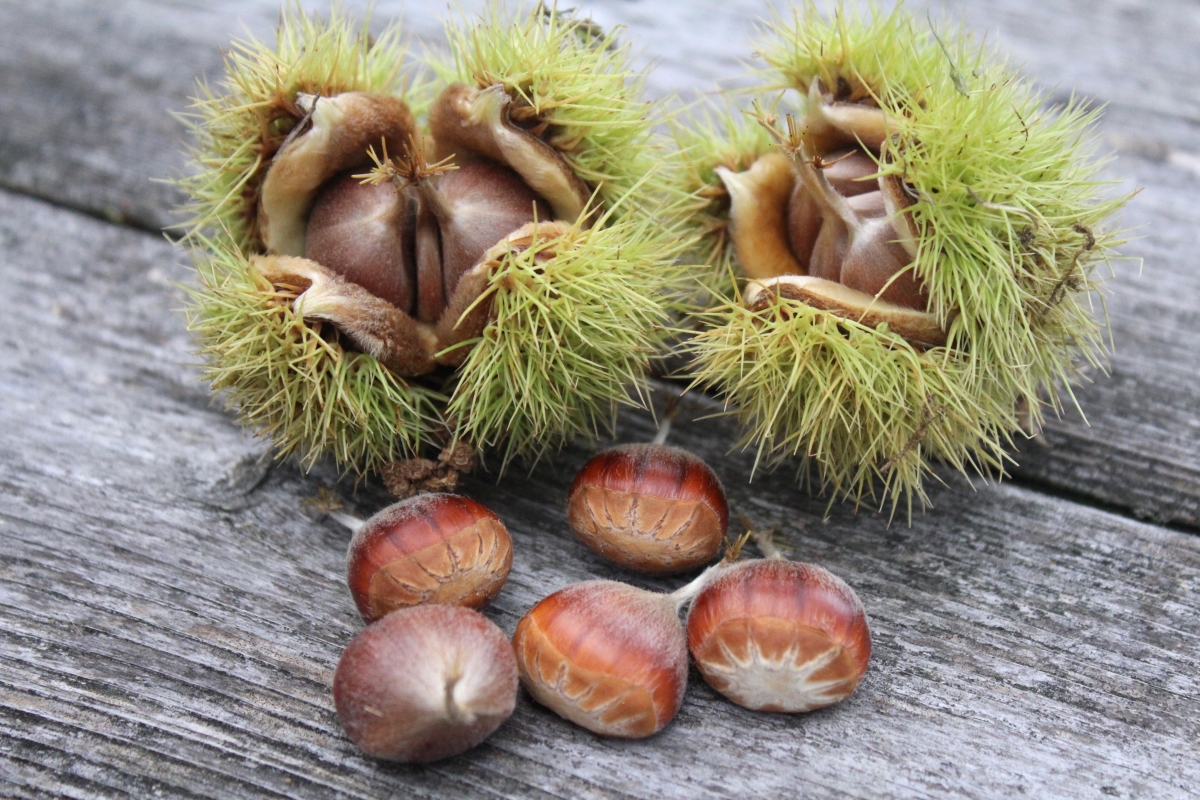
Hazelnuts
Wild hazelnuts are incredibly common, but they’re the one nut that’s actually hardest to find in the autumn. They mature in late August, and that’s when the wildlife starts harvesting them. At that stage, they’re “green” and moist on the inside and need to be dried until they’re the chestnuts we’re familiar with from the store.
If you want to beat the squirrels, harvest them before labor day, and then store them for a month or two in a well ventilated area so they can dry for storage.
(Occasionally, in heavy years, they hang all autumn and into winter if there’s not enough animals to harvest them all in late summer.)

Heartnuts
Another wild nut that’s similar to a walnut, heartnuts (Juglans ailantifolia) are a sweet rich nut with a mild flavor. They’re quite similar to butternuts, but the nuts themselves are heart shaped instead of football shaped like butternuts.
They’re not all that common in the wild, but I have come across a few.
Hickory Nuts (& Pecans)
There are many different types of hickory nuts (Carya sp.) in the wild, from pignut hickories (Carya glabra) that are bitter and mostly used for oil, to shagbark hickory (Carya ovata) which is sweet and delicious.
Wild pecans are also in this genus, and the growth habit of all the trees is quite similar.
Shagbark hickories are a favorite of forages, both because of their delicious nuts, but also because their bark has been used as a flavoring for centuries. Even if you don’t find one with nuts in the fall, you can still gently pull off pieces of their shaggy bark (which they shed naturally) to make shagbark hickory syrup.
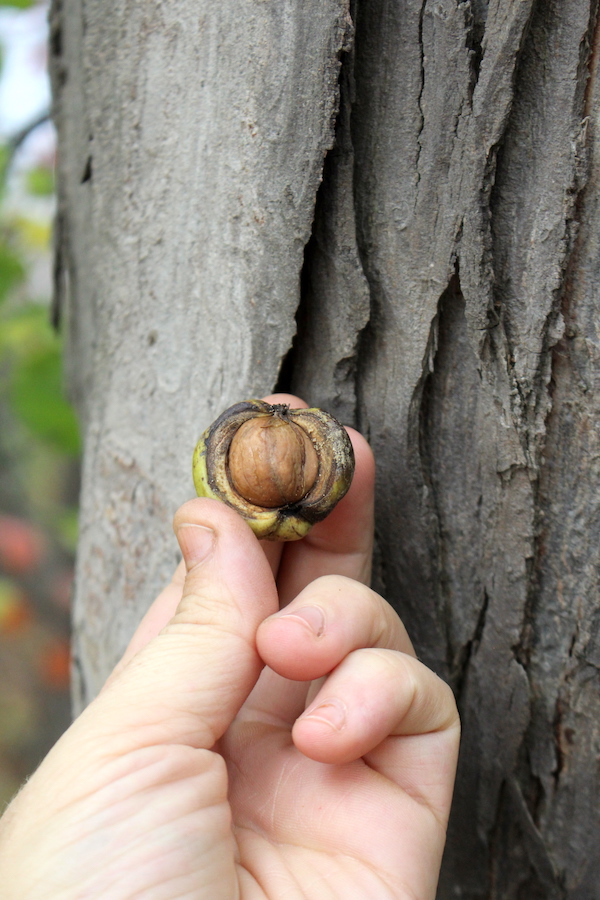
Pine Nuts
Nut pines are most common in the Western States, but now permaculture enthusiasts have started growing a specific strain of cold hardy Korean nut pine that’s hardy here in the northeast. They’re prolific, and once all those cultivated pine nuts start seeding they’ll be plenty in the wild to go around.
In the meantime, this is mostly a treat for foragers out west.
Other Tree Seeds
Beyond true nuts, there are also a number of trees with edible seeds.
Hop hornbeam (Ostrya virginiana) produces hop like seed pods with edible nut like seeds inside. (You can also tap hop hornbeam for syrup, so it’s a really unique food baring tree.)
Maple seeds are edible too, and they’re usually roasted, salted or candied in maple syrup.
Ash samaras (also called ash keys) are edible too, and they’re traditionally pickled.
Fall Foraging
Looking for more things to forage this fall?
- 50+ Edible Wild Berries and Fruits
- 20+ Edible Roots, Tubers, and Bulbs
- 40+ Plants You Can Make Into Flour















I found alot of these nuts in the woods with its husk it measured 1 inch, 2/8 in length and diameter, green smooth husk with brown blotches one almost fully brown, when peeling the husk, there is a hard shell some smooth and some alittle lumpy. That are in the shape of a Acorn that if imagined was smushed 1/4 of an inch on both sides and 3/4 inch width length to peak 1 inch . Going from top of the shell it has small grooves, at the middle they slightly press in where a stem might have been and then these grooves get more round the further away from that spot. When laying flat you can notlce a shallow channel down the center or just flat some are flat. Facing the bottom of the shell has a small peak or maybe dipple there all different lengths some about half the size of the shell. Just opened one with a hand held nut cracker. Has a white nut with four chamber + like this pluse sign each side has its own, individualy wrapped pulp that fill the entire shell top to bottom.
I need help identifying this unique nut and i can send a 20mp photo if it helps. Just so foreign to me i thought this would be a good way to get advice. P.S. Nice read just didn’t see a match for me….
I’m writing a true story about my family in 1929 and their pet black bear, yes, bear. I needed to understand what kinds of foods a bear would eat in northern Vermont. Thanks for your wonderful article.
You’re very welcome. We’re so glad that you enjoyed the post. That sounds like an incredible story.
Thank you for teaching us about quickweed. This is the weed I see In my dreams when I close my eyes at night. I will start using it instead of cursing it – or at least using and cursing. Many thanks!
You’re very welcome. So glad the post was helpful for you.
Awesome read! Thanks for reminding people that these tree nuts are really edible. Still remember my Grandparents and aunts and uncles going to the parks to pick up black walnuts and some mushrooms. The darkness from black walnuts outer casings permeate the roads here in SE MI in the fall. (SAD) They canned the mushrooms and grape jelly. It was second nature to them and a lot of fun for me and my older cousins!
You’re welcome. I’m so glad you enjoyed the post.